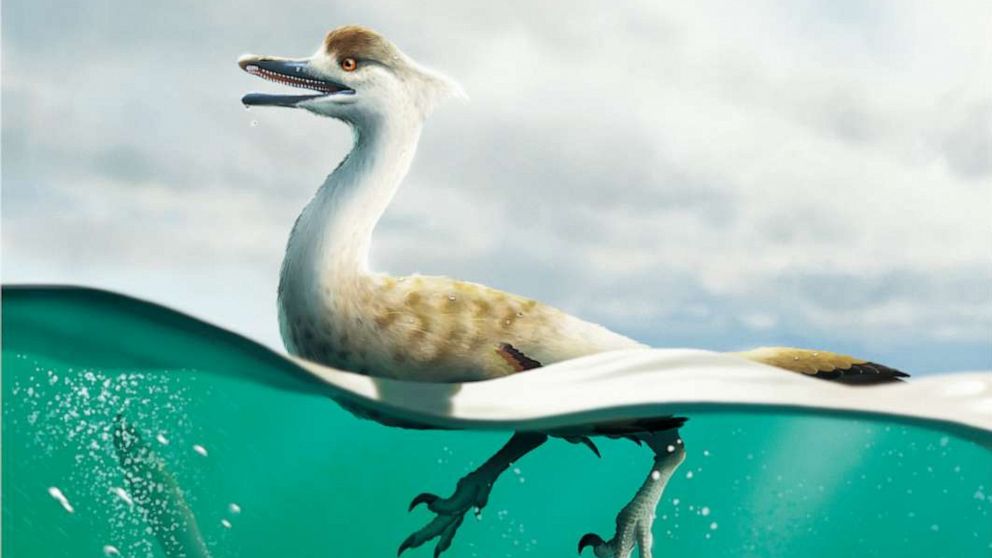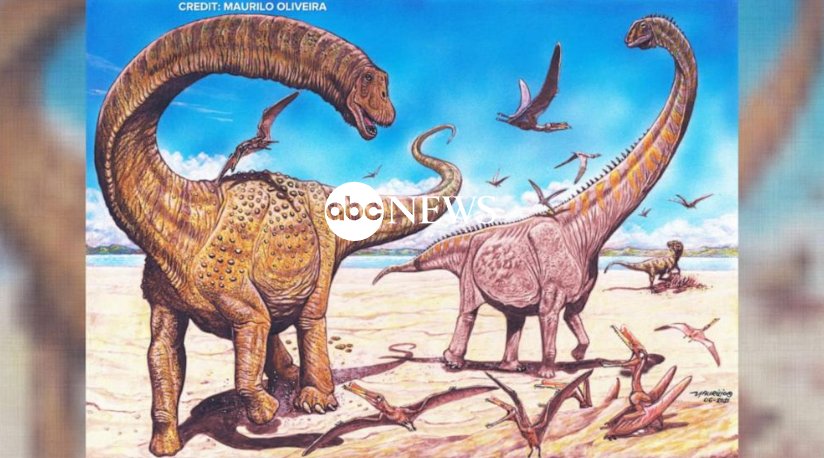The species was named Natovenator polydontus: “Swimming hunter with many teeth.”
Scientists have discovered a new predatory dinosaur fossil in Mongolia that was likely a semiaquatic diving predator.
A near-complete skeleton, found in the Omnogovi Province, depicts a bird-like specimen and was named “Natovenator polydontus,” or “Swimming hunter with many teeth,” according to a paper published in Communications Biology on Thursday.
Researchers from the Korea-Mongolia International Dinosaur Expedition located the fossils at the Baruungoyot Formation in 2008, Young-Nam Lee, a professor of vertebrate paleontology who led the dig, told ABC News.
During the expedition, 27 members of the team gathered 196 cataloged specimens. The Natovenator polydontus was found by Robin Sissons, a graduate student of the University of Alberta, Lee said.

The fossil was not fully exposed in the field, so Sissons, despite not knowing what it was at the time, made a plaster jacket for it, Lee said.
All of the fossils from that collection were then shipped to South Korea for preparation and study, where “a whole skeleton came to light” of the new species of dinosaur, Lee said.
The specimen “was so delicate but beautifully preserved,” Lee said.
It included a skull, spinal column, one forelimb and the remains of two hindlimbs. Its streamlined body, with ribs that point toward its tail, is similar to modern diving birds and its long neck resembles modern water birds such as geese, the researchers said. These adaptions may have reduced the drag that Natovenator would have been subjected to when swimming, helping it to catch prey.

The fossil also included an “unusually high number of teeth” compared to the size of the dinosaur’s jaw, indicating that it ate a fish or insect-based diet, according to the researchers.
“Instantly we realized it was something important,” Lee said. “It had a skull with many tiny teeth and a very long neck was distinct.”
This is the first time that a non-avian theropod — a type of carnivorous dinosaur that walked on two legs — was discovered with a streamlined body similar to some birds, according to the researchers.
Analysis of evolutionary relationships also indicate that the new species is closely related to halszkaraptorines, a group of non-avian theropods that previous research has suggested may have been adapted for a semiaquatic lifestyle.
“Natovenator is a valuable discovery,” Lee said. “Finding semi-aquatic dinosaurs means that the ecological diversity was very high in dinosaurs. Halszkaraptorines could change our prejudice about the lifestyle of dinosaurs.”
